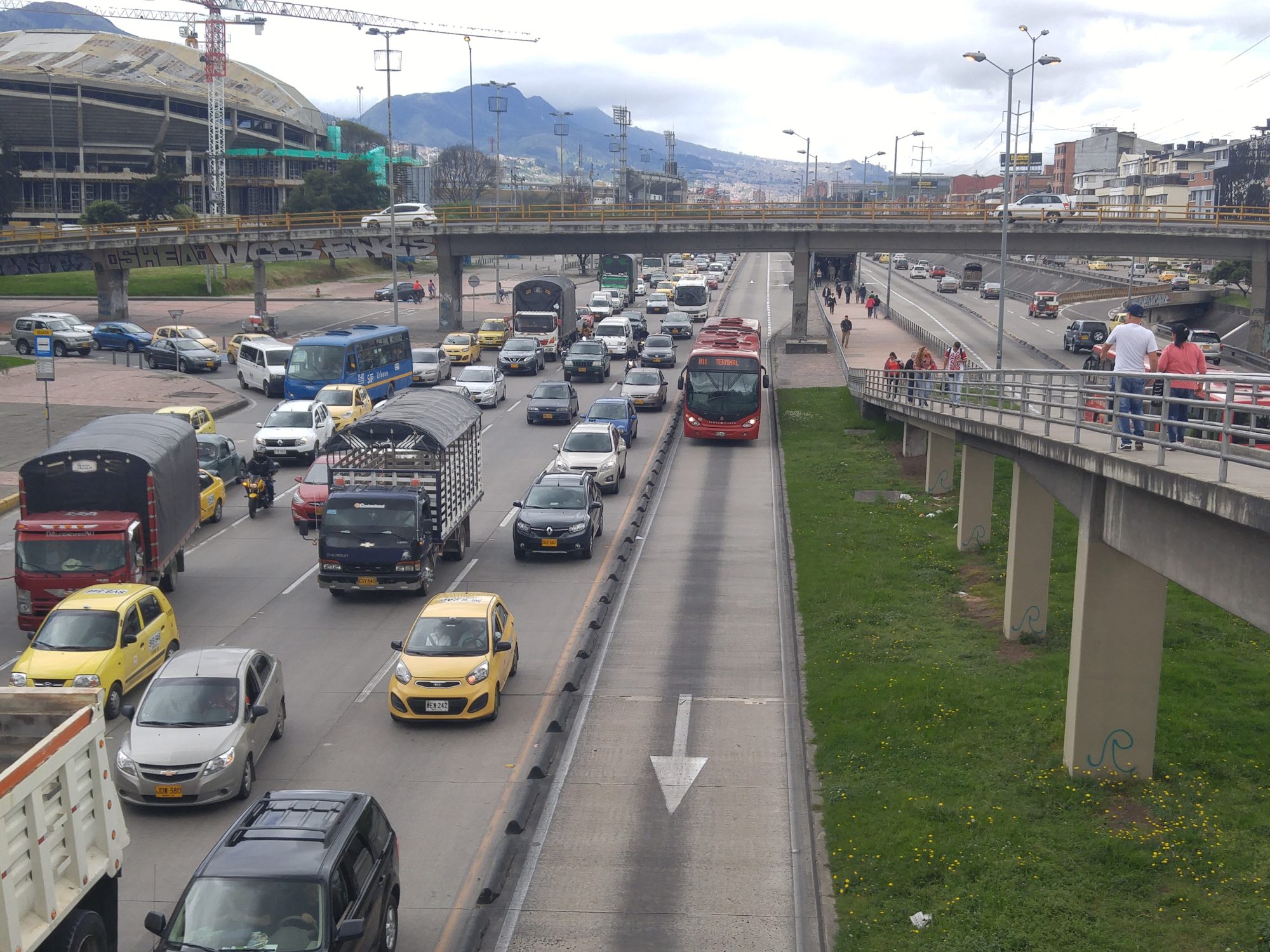Catalyst Award recipient Dustin Robertson spent three weeks in June 2017 exploring and investigating the public transportation system in Bogotá, Colombia. The goal was to understand the system from multiple perspectives and understand how the public is involved (or not) in its design, planning and operation. Dustin is a second-year student in Tulane’s City, Culture and Community PhD. Program.
Public transportation has shown to have transformative impacts on social and environmental problems in cities around the world. This summer Taylor funding helped me travel to Bogotá, Colombia to study the TransMilenio a bus rapid transit (BRT) system. Although this model was not invented in Bogotá, the success of the system has gained international acclaim and has been replicated in numerous cities around the world. To fully understand the system I needed to experience it first-hand. During this visit I learned about the importance and challenges of implementing and maintaining innovative transportation systems. During my 20 day visit I traveled across the city via the TransMilenio, observing the infrastructure and layout of the system as well as doing some serious people watching to see how the system is used and how people behave. In addition, I conducted interviews with NGO leaders, transportation experts, and officials of the TransMilenio to learn about the history, current status, and future of the system.
A Revolution in Bogotá
If you’ve never seen a BRT system it basically consists of separate lanes that are used exclusively by buses which can only be accessed at designated stations located about 500 meters apart. The idea is that by separating buses from cars, traffic will flow smoother and faster on the main thoroughfares of a city. The TransMilenio in Bogotá is more than just a simple way to get around, it has become an integral part of the city, the signs of which can be found in essentially all parts of the city. From the bus lanes and long grey stations, to the bright red and green buses that circulate throughout the city to billboards and radio advertisements, it would be hard to ignore the TransMilenio in Bogotá. An aerial view of one of the TransMilenio stations is seen in the following picture:
Bogotá was not the first city to adopt a BRT system (that distinction goes to Curitiba, Brazil), but it was adapted to the local context and implemented in 2000. The TransMilenio quickly had a revolutionary impact on transportation and objectively improved living conditions for millions of Bogotanos. Most notably it ended a dangerous, corrupt and polluting competition between private bus companies known as the Guerra del centavo (penny war). It also brought improved public transportation to all areas of the city including remote, low-income neighborhoods outside of the cinturón de miseria (poverty belt) which shaved hours off of average travel times.
Furthermore the TransMilenio was not created in isolation. It was part of a larger transportation overhaul which sought to stem the rise in car traffic in Bogotá by promoting alternative modes of transportation. To facilitate non-motorized transport, the TransMilenio is linked with an extensive network of bikepaths. Bike parking at one of the stations can be seen in this picture:
Challenges: Keeping up with the City
Innovative transportation systems are not like works of art that can be created at one time and then simply preserved over time. Instead, they must continually evolve and adapt to serve the changing characteristics and needs of the cities they serve. In the years since the creation of the TransMilenio multiple issues caused by demographic, economic, and social factors have emerged that reduce the quality of service and damage the system’s initial popularity. Crowding, long wait times, crime and harassment against women are all problems to which the TransMilenio has not found effective answers. There is even push-back over the price of fares as the system tries to find a balance between economic sustainability and affordability for riders. The mayor who initially created the system and was praised internationally, Enrique Peñalosa, now faces scrutiny from the public for the TransMilenio’s shortcomings. In this image he is satirized for the recent fare hike to 2,200 Colombian Pesos (about 0.73 USD).
Can Public Participation Help the TransMilenio Adapt?
Currently the TransMilenio faces criticism from all sides. Some critics call for minor changes while others arguing that it should be scrapped completely or at least supplemented by another mode of public transportation such as an underground metro. If the system is going to survive and regain its former glory it seems clear that changes are necessary. Because transportation is an essential urban service that affects most Bogotanos on a daily basis, decisions about the system should be done with the highest possible level of public participation. However, until now the TransMilenio seems unable to translate the needs and preferences of the public into action. I did find one promising story related to the planning of a new TransMilenio route on one of Bogota’s most important avenues. A coalition consisting of NGO’s/community organizations, two universities and the Chamber of Commerce organized five workshops in different locations along the proposed route in order to understand the needs, priorities and concerns of local communities. These were then delivered to the route planners in the form of a report. It remains to be seen how seriously this report will be taken.
Next Steps
This trip served as the scoping visit for my eventual dissertation research. The participant observation gave me first-hand exposure to the TransMilenio system and Bogotá. Furthermore through interviews I was able to establish contact with organizations and individuals who work in this domain (including TransMilenio officials). I will keep in touch with these contacts and monitor secondary sources of information in over the next year before returning to Bogotá for in-depth research on which I will base my dissertation.



